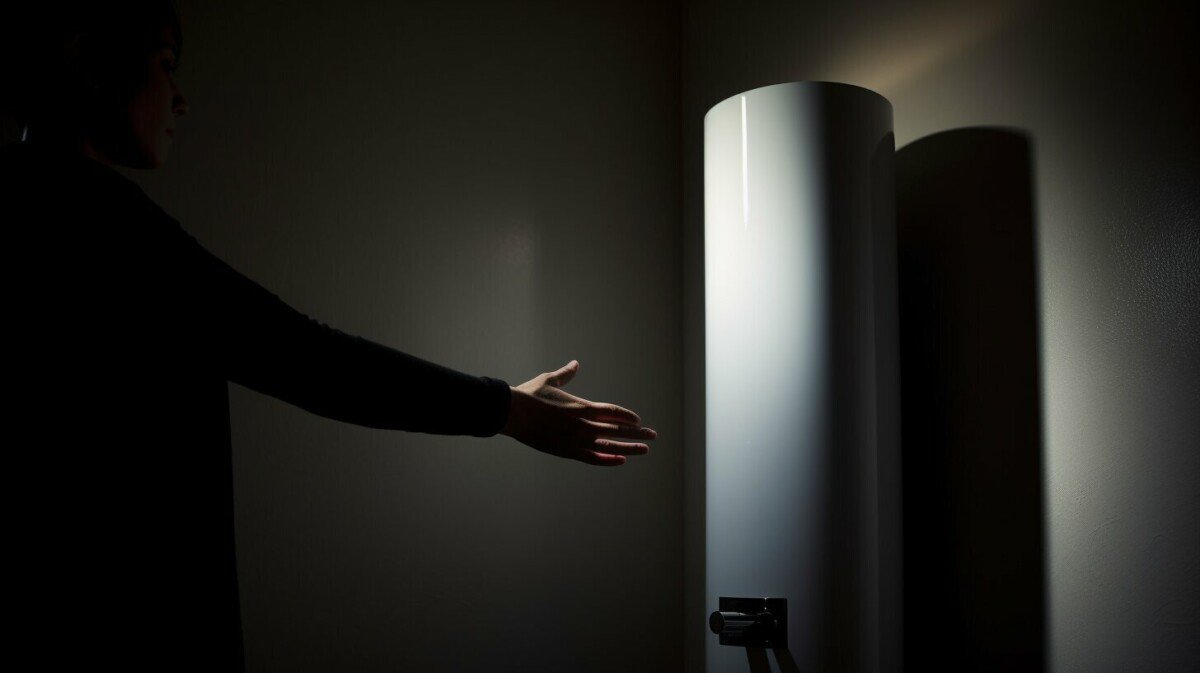As a homeowner, it’s important to know how to troubleshoot common problems with your electric water heater. Not only can it save you money in repairs, but it can also prevent any potential safety hazards.
In this article, we will provide a comprehensive guide on troubleshooting electric water heaters. We will cover common problems and their solutions, step-by-step guides on how to fix issues with thermostats and heating elements, as well as tips on maintaining your water heater for optimal performance.
How to Identify if Your Electric Water Heater is Not Working
An electric water heater is an essential appliance that provides hot water for various household tasks. However, it can be frustrating when it stops working correctly. It is essential to know when your electric water heater is not working correctly to avoid further damage or safety hazards. Here are some common signs that indicate your electric water heater is not working correctly:
| Sign | Possible Cause |
|---|---|
| No hot water | Faulty heating element, thermostat issues, or a tripped circuit breaker. |
| Not enough hot water | Sediment buildup in the tank, thermostat issues, or a small tank size. |
| Strange sounds | Sediment buildup in the tank, faulty heating element, or loose connections. |
| Water leakage | Damaged or corroded tank, loose valves or connections, or high pressure. |
If you notice any of the signs mentioned above, it’s essential to know how to troubleshoot your electric water heater and fix the issue. In the next section, we’ll provide a step-by-step guide on how to address common electric water heater problems.
How to Fix Electric Water Heater Issues: Step-by-Step Guide
While troubleshooting your electric water heater, you may find that it has a faulty thermostat or heating element. In this section, we will provide you with a step-by-step guide on how to fix these common issues.
Note: Before attempting any repairs on your electric water heater, turn off the power supply to the unit.
How to Replace an Electric Water Heater Thermostat
If your electric water heater is not producing hot water or is producing water that is too hot, a faulty thermostat could be the problem. Here are the steps to replace it:
| Tools Needed: | Adjustable wrench, screwdriver, new thermostat, and a multimeter |
|---|---|
| Step 1: | Remove the access panel and insulation covering the thermostat. |
| Step 2: | Remove the wires from the old thermostat by loosening the screws that attach them to the element. Make sure to label which wire goes to which terminal. |
| Step 3: | Use a multimeter to test the old thermostat to make sure it’s faulty. |
| Step 4: | Remove the old thermostat by loosening the screws or bolts that hold it in place. |
| Step 5: | Install the new thermostat and tighten the screws or bolts to secure it in place. |
| Step 6: | Connect the wires to the new thermostat using the labels you created in step 2. |
| Step 7: | Replace the insulation and access panel. |
| Step 8: | Turn on the power supply to the unit and test the thermostat to make sure it’s working properly. |
How to Replace an Electric Water Heater Heating Element
If your electric water heater is not producing hot water at all, a faulty heating element could be the problem. Here are the steps to replace it:
| Tools Needed: | Adjustable wrench, screwdriver, new heating element, and a multimeter |
|---|---|
| Step 1: | Turn off the power supply to the unit and drain the tank. |
| Step 2: | Remove the access panel and insulation covering the heating element. |
| Step 3: | Remove the wires from the old heating element by loosening the screws that attach them to the element. Make sure to label which wire goes to which terminal. |
| Step 4: | Use a multimeter to test the old heating element to make sure it’s faulty. |
| Step 5: | Remove the old heating element by loosening the screws or bolts that hold it in place. |
| Step 6: | Install the new heating element and tighten the screws or bolts to secure it in place. |
| Step 7: | Connect the wires to the new heating element using the labels you created in step 3. |
| Step 8: | Replace the insulation and access panel. |
| Step 9: | Turn on the power supply to the unit and refill the tank with water. |
| Step 10: | Test the heating element to make sure it’s working properly. |
By following these steps, you can save money by fixing common issues with your electric water heater instead of having to replace the entire unit.
Common Water Heater Problems and Solutions
Electric water heaters are prone to several problems that can cause them to malfunction. Here are some of the most common issues and their solutions:
| Problem | Solution |
|---|---|
| Not enough hot water | Check the thermostat and reset it to the desired temperature. If the problem persists, replace the heating element. |
| No hot water | Check the circuit breaker, reset button, and wiring. If the problem persists, replace the thermostat or heating element. |
| Leaking water | Check the drain valve and temperature-pressure relief valve for leaks. Tighten them if necessary. If they are damaged, replace them. |
| Strange noises | Drain the tank to remove sediment buildup. If the problem persists, replace the heating element. |
| High electricity bills | Lower the thermostat setting or insulate the tank to reduce heat loss. Check the wiring and replace any damaged insulation. |
Preventive maintenance can help you avoid these problems. Here are some tips:
- Flush the tank annually to remove sediment buildup.
- Check the anode rod every three years and replace it if it is corroded.
- Inspect the wiring and connections regularly.
- Monitor the temperature and pressure and adjust them as needed.
By following these tips and troubleshooting common issues, you can ensure that your electric water heater operates efficiently and reliably for many years to come.
How to Test an Electric Water Heater Thermostat
If you suspect that your electric water heater is not heating up properly, the thermostat is one of the components that you need to check. The thermostat controls the temperature of the water in the tank, and if it is faulty, the water may not get hot at all or may not reach the desired temperature. Here is a step-by-step guide on how to test an electric water heater thermostat:
- Turn off the power supply to the water heater at the circuit breaker or fuse box.
- Remove the thermostat cover panel on the water heater. This is usually located on the side of the tank.
- Use a multimeter to test the thermostat. Set the multimeter to the ohms setting and touch one of the probes to each terminal on the thermostat. The reading on the multimeter should be zero or close to zero. If the reading is higher than zero, the thermostat is faulty and needs to be replaced.
- If the thermostat is working properly, you can check the temperature setting. Use a thermometer to measure the temperature of the water at the tap. Compare this to the temperature setting on the thermostat. If the thermostat is set correctly but the water is not the right temperature, the heating element may be faulty.
If you find that the thermostat is faulty, you can easily replace it yourself. Make sure to purchase a thermostat that is compatible with your water heater model and follow the manufacturer’s instructions for installation. If you are not comfortable working with electricity, it is always best to call a professional to replace the thermostat for you.
How to Test an Electric Water Heater Element
If you are experiencing issues with your electric water heater not producing enough hot water, or no hot water at all, it could be due to a faulty heating element. Testing the element is an important troubleshooting step to determine if it needs to be replaced. Here is a step-by-step guide on how to test an electric water heater element:
- Turn Off Power: Before testing the element, ensure that power to the water heater is turned off at the circuit breaker.
- Remove Access Panel: Remove the access panel located on the front of the water heater to access the heating element.
- Test with Multimeter: Set your multimeter to the ohms setting and touch the probes to the element’s two terminals. The reading should be between 10 and 20 ohms. If the reading is zero, the element is likely faulty and needs to be replaced.
- Repeat Test: Repeat the test on the second element if your water heater has two. Both elements should have similar readings. If the readings are vastly different, one of the elements may need to be replaced.
- Replace or Call a Professional: If the element is faulty, it will need to be replaced. This can be done yourself if you are comfortable with electrical work, or you can call a professional plumber to handle it for you.
Testing the heating element is an important step in troubleshooting electric water heater problems, as it can help determine the root cause of issues such as insufficient hot water. If you are uncomfortable performing this test yourself, it is best to call a professional plumber to handle it for you.
How to Determine if Your Electric Water Heater Needs to be Replaced
While troubleshooting your electric water heater, you may come to the realization that it is beyond repair and needs to be replaced. Here are some warning signs that indicate your water heater needs replacement:
| Warning Sign | Description |
|---|---|
| No hot water | If your water heater is not producing any hot water, it could be a sign that the heating element has failed or the tank is corroded. |
| Leaking water | If you notice water pooling around the base of your water heater, it could be a sign that the tank has developed a leak or crack. |
| Strange noises | If your water heater is making strange noises, such as popping or cracking sounds, it could be a sign that sediment has built up in the tank and is causing it to overheat. |
| Old age | If your water heater is more than 10 years old, it may be time to replace it. Old water heaters may not operate as efficiently as newer models, which can lead to higher energy bills. |
If you notice any of these warning signs, it’s important to replace your electric water heater as soon as possible to avoid further damage or safety hazards.
How to Maintain Your Electric Water Heater
Maintaining your electric water heater is crucial to preventing common problems and extending its lifespan. Follow this checklist of maintenance tasks to keep your water heater in optimal condition:
| Maintenance Task | Frequency |
|---|---|
| Check the pressure relief valve | Once a year |
| Flush the tank | Once a year |
| Monitor the water temperature | Once a month |
| Inspect the anode rod | Every two years |
Checking the pressure relief valve ensures that it’s working properly and prevents the tank from overheating or bursting. Flushing the tank removes sediment and mineral buildup, which can reduce efficiency and cause corrosion. Monitoring the water temperature prevents scalding and ensures optimal performance. Inspecting the anode rod prevents corrosion and extends the lifespan of the tank.
Additionally, consider installing insulation around the tank, which can improve efficiency and reduce energy costs. Inspect the insulation regularly and replace it if it becomes wet or damaged.
By following these maintenance tasks, you can prevent common water heater problems and extend the lifespan of your electric water heater.
Safety Tips for Troubleshooting Electric Water Heaters
Working with electric water heaters can be hazardous, as the combination of electricity and hot water can pose serious risks. By following the right safety procedures, you can minimize your risk of injury and ensure a successful troubleshooting experience. Below we outline some of the safety tips you should keep in mind:
- Turn off power to the water heater before beginning any work. This is crucial to ensure that you do not get electrocuted while working on the water heater. Turn off the circuit breaker that powers the water heater, as well as the main power switch on the water heater itself. Test the electricity with a voltmeter to confirm that it is turned off.
- Wear protective gear. When troubleshooting an electric water heater, it is important to wear protective gear to minimize the risk of burns, shocks and other injuries. Protective gear includes rubber gloves, safety glasses, insulated tools and protective clothing.
- Don’t touch the water or pipes. When the water heater is on, the water and pipes can become very hot. Avoid touching them as they can cause serious burns.
- Be cautious when draining the water heater. Draining the water heater can be beneficial for maintenance and repairs, but it also comes with risks. The water can be very hot, and it’s important to release the pressure before opening the drain valve. Make sure to follow the manufacturer’s instructions and wear gloves when doing this.
- Consult an expert if you’re unsure. If you’re unsure about how to diagnose or repair a problem with your electric water heater, it’s best to consult a professional. Don’t take on a task that you don’t have the skills or knowledge to complete safely.
By following these safety tips, you can troubleshoot your electric water heater safely and effectively, minimizing any risks of injury or damage.
Frequently Asked Questions About Electric Water Heater Troubleshooting
If you’re having issues with your electric water heater, you’re not alone. Below are some common questions people ask about troubleshooting electric water heaters.
1. Why am I not getting any hot water?
If you’re not getting any hot water, it could be due to a variety of reasons such as a tripped circuit breaker, a faulty heating element or thermostat, or a broken dip tube. Check the circuit breaker and reset it if necessary. If that doesn’t work, consider testing the heating element and thermostat or calling a professional.
2. Why is my water not getting hot enough?
If your water is not hot enough, it could be due to a faulty thermostat or heating element. Check the temperature setting on the thermostat and adjust it accordingly. If that doesn’t work, test the heating element and thermostat or call a professional.
3. Why is my water heater making strange noises?
If your water heater is making strange noises such as popping or cracking sounds, it could be due to sediment buildup in the tank. Try flushing the tank to remove any sediment or debris. If the noises persist, consider calling a professional.
4. How often should I flush my water heater?
You should flush your electric water heater at least once a year to remove any sediment or debris. This will help maintain optimal performance and extend the lifespan of the water heater.
5. What should I do if I smell gas?
If you smell gas, turn off the gas supply to the water heater and leave the area immediately. Do not use any electrical switches or appliances. Call a professional immediately to inspect the water heater and fix any gas leaks.
6. Can I replace a heating element or thermostat myself?
Replacing a heating element or thermostat can be a difficult and potentially dangerous task. It’s recommended to call a professional to make these repairs.
7. How long should an electric water heater last?
An electric water heater can typically last up to 10 years or more with proper maintenance and care. However, factors such as usage and water quality can affect its lifespan.
8. What size water heater do I need?
The size of the water heater you need depends on several factors such as the size of your household, your hot water usage, and the climate in your area. It’s recommended to consult a professional to determine the appropriate size for your needs.
9. How can I make my water heater more energy-efficient?
You can make your water heater more energy-efficient by insulating the tank, setting the temperature to 120 degrees Fahrenheit, and using a timer to control when the water heater operates.
10. Is it better to repair or replace a water heater?
It’s typically more cost-effective to repair a water heater if the issue is minor and the water heater is relatively new. However, if the water heater is old and frequently experiencing problems, it may be more cost-effective to replace it.
Conclusion
Now that you have a better understanding of how to troubleshoot and fix electric water heater issues, you can save yourself time and money in the long run. Remember to always follow safety precautions when working with electricity and hot water.
If you are unsure about troubleshooting your electric water heater, it’s always best to seek professional help. Regular maintenance can also help prevent common problems and extend the lifespan of your water heater.
We hope this article has provided you with valuable insights and tips on electric water heater troubleshooting. Don’t hesitate to take action and troubleshoot your own water heater if you suspect an issue. With the right tools and knowledge, you can fix many common electric water heater problems and maintain optimal performance for years to come.



